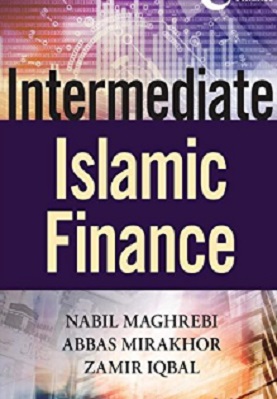
| Intermediate Islamic Finance |
| Nabil Maghrebi |
| 416 |
| |
| PDF Direct Download Link |
| Click for Hard Copy from Amazon |
INTERMEDIATE ISLAMIC FINANCE – Book Sample
Equity, Efficiency, and Firm Behavior
With human nature as we know it it would be impracticable or very unusual for one man to guarantee to another a definite result of the latter’s actions without being given power to direct his work. And on the other hand the second party would not place himself under the direction of the first without such a guaranty ….
The result of this manifold specialization of function is enterprise and the wage system of industry. Its existence in the world is a direct result of the fact of uncertainty.
—Frank H. Knight, Risk, Uncertainty and Profit (1921, 270–271)
Islamic finance has drawn the lion’s share of the attention of Muslim economists over the last three decades. Nevertheless, some important contributions have been made to other issues in macro- and microeconomics. In the latter area, the theory of the firm in general and profit maximization postulate in particular have been the focus of debate as flag bearers of applicability of conventional economic theory in Islamic economics.1
Given these developments, this chapter discusses the divergence of views regarding the methodological approach to the formulation of issues in Islamic economics. The focus is then made on the development of various theories of firm behavior in Islamic economics. It addresses, then, the important role played by the principle profit-sharing under the conventional theory of the firm, and in an Islamic economy characterized by a rules-based system defined by its institutional structure. Finally, the chapter explains a theoretical construct that ensures equity and allocative efficiency.
METHODOLOGICAL ISSUES IN ISLAMIC ECONOMICS
Thus far, two views have emerged from the debate about the theory of the firm and profit maximization postulate. The majority view holds that the postulate is a useful theoretical construct but has to be modified before it is applicable to a firm operating in an Islamic system.2
The second view is best articulated by the early contributions of Junaid (1992) and Munawar Iqbal (1992).3 The second view has two components. First, it argues that an Islamic economy operates on the basis of rules that constitute its institutional (see Junaid 1992; Iqbal 1992; Mirakhor 2009; Mirakhor and Hamid 2009; Mirakhor and Askari 2010) and its normative structure.
Once these are in place, positive theories of firm behavior, among other theoretical constructs, can yield valuable insights as guide to policy. Secondly, this view argues that the profit maximization postulate is an efficiency criterion and, as such, it is applicable to an Islamic economy, provided that the normative struc- ture represented by the institutional framework, derived from al-Qur’an and as-Sunnah, is in place (see Junaid 1992; Iqbal 1992).
Hasan, in his various papers since 1988, has focused on these two aspects of the postulate (Hasan 1988, 1992, 2011a), arguing that the postulate, despite its shortcomings, particularly on empirical ground, is still “needed in Islamic economics as well” (Hasan 1992, 239) and that the profit maximization, along with other postulates of neoclassical economics, finds applicability in Islamic economics, as “these postulates have also to be the fulcrum of the new discipline for its survival” (Hasan 2011a, 2).
Moreover, he asserts that “[p]rofit maximization is of global connotation, and has for that reason more and wider expository and predictive powers.
Also, it admirably helps explain adjustments between the changes occurring within and between markets” (Hasan 2002, 105).
The first view was initially articulated by Metwally (1981),(( 4Metwally’s paper was first published by the Center for Research in Islamic Eco- nomics, King Abulaziz University Research Series in English no. 5 1981). It was reprinted in Tahir, Ghazali and Syed Agil (Eds., 1992).)) who modified the profit maximizing objective by introducing “charity” as an additional argument of the objective function.5 A number of papers advocating the first view followed Metwally by maximizing a utility function for the entrepreneur that included various additional elements as arguments of the objective function (see Yusof and Amin 2007 and Azid, Asutay and Burki 2007).
A clear position that emerges out of the last three decades of debate on this issue is that of Azid, Asutay and Burki (2007). After a succinct review of various contributions to the debate, they suggest that “ … we cannot tame markets with the cane of legislation. Hence, firms cannot be forced to act morally in such a market.
We need to transform the market into an ethicized market by means of endogenizing the moral elements in all socioeconomic menus, preferences, institutions and interactions” (Azid, Asutay and Burki 2007, 24). In other words, if the rules, or institutional structure, of behavior are internalized (i.e., the normative structure is in place), the positive theory can and does serve useful purposes.
What is encouraging about the contributions of scholars to the theory of firm behavior in an Islamic setting is their willingness to address contemporary challenges based on their own direct understanding of the rules of behavior prescribed by al-Qur’an and as-Sunnah enriched by the writings and ideas of scholars of generations past.6
To read more about the Intermediate Islamic Finance book Click the download button below to get it for free
Report broken link
Support this Website
for websites